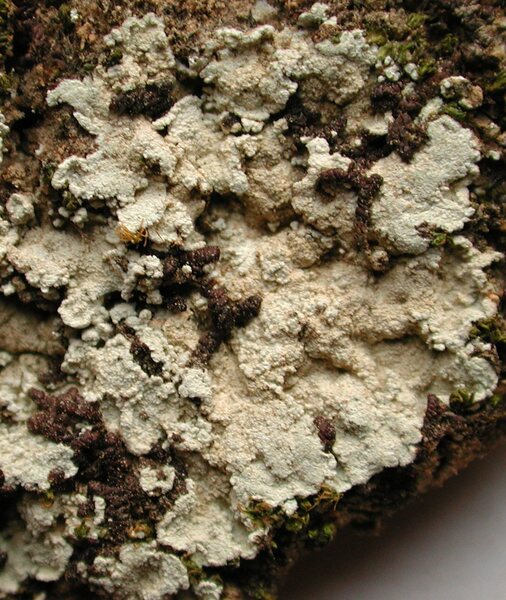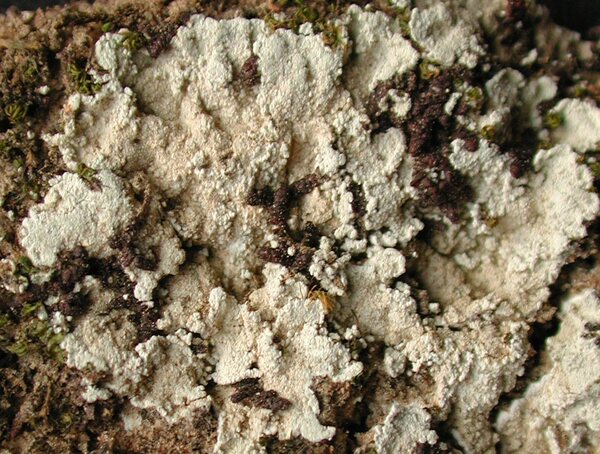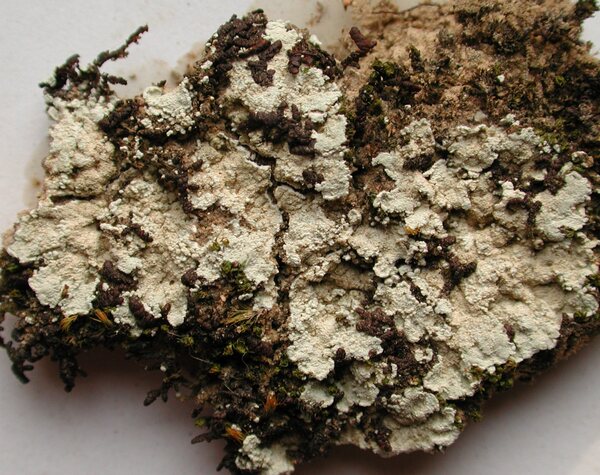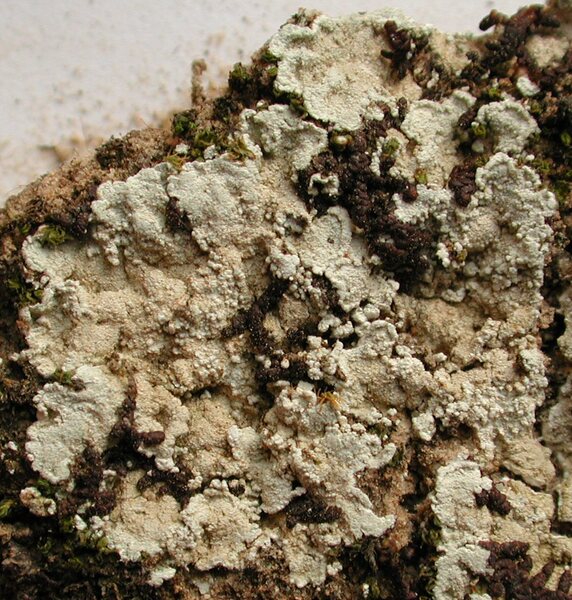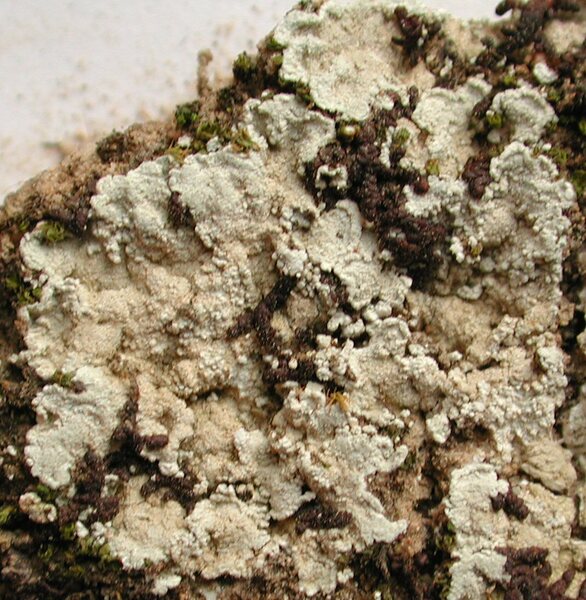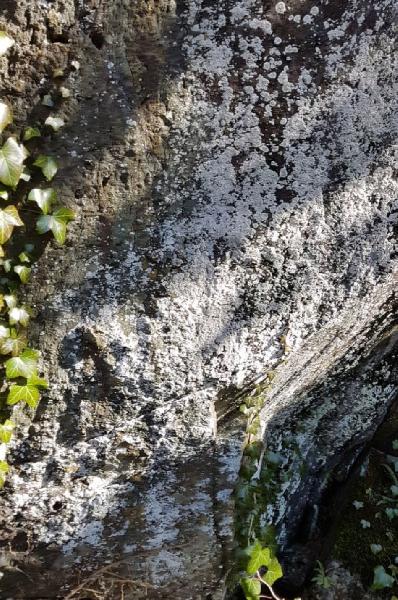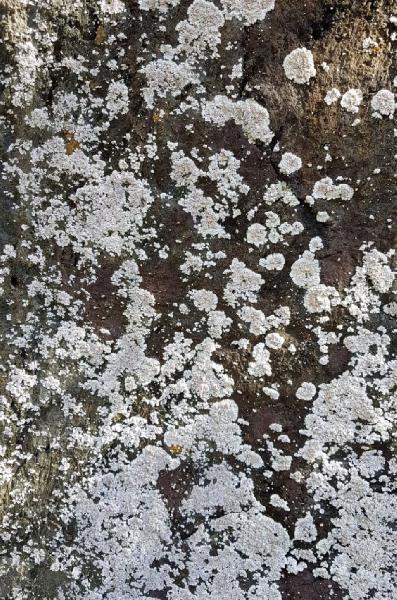Lepraria lobificans Nyl.
Flora, 56: 196, 1873.
Synonyms: Lepraria santosii Argüello & A. Crespo
Distribution: N- TAA (Nascimbene & al. 2022). C - Laz (TSB 36478), Sar (Tretiach & al. 2009). S - Camp (Tretiach & al. 2009, Cicardi & al. 2025), Cal (CLU 12239), Si (Tretiach & al. 2009).
Description: Thallus leprose to subcrustose, generally well-delimited and forming regular, confluent rosettes, dirty white to pale grey with a bluish tinge, (0.16-)0.25-0.35(-0.47) mm thick, the margins distinct, usually well-developed, with a raised, thick margin. Cortex absent; hypothallus generally poorly developed, formed by light brown hyphae, K-; prothallus absent. Central part of thallus granular, tightly attached to the substratum, the granules ecorticate, soredia-like, ellipsoid to irregularly shaped, (0.22–)0.28-0.35(-0.65) mm in diam., devoid of crystals, surrounded by a weft of up to 100 µm long, hyaline, projecting hyphae; hypothallus compact, composed of tightly intertwined hyphae. Photobiont chlorococcoid, the cells 10-16 µm wide. Spot tests: K+ yellow-brownish, C-, KC-, P+ orange, UV- or UV+ pink. Chemistry: different chemotypes: 1) atranorin, roccellic acid, zeorin, stictic and constictic acids; 2) atranorin, UV+ vivid pink unknown, stictic and constictic acids; 3) atranorin, roccellic acid, stictic and constictic acids; 4) atranorin, roccellic acid, stictic and constictic acids, fumarprotocetraric or protocetraric acids; 5) atranorin. roccellic acid, protocetraric acid; 6) atranorin, roccellic acid, protocetraric acid, fumarprotocetraric acid; 7) atranorin, roccellic acid, fumarprotocetraric acid.Note: on siliceous soil and on terricolous mosses, more rarely directly over siliceous rocks, in sheltered situations but in sunny and arid habitats, with optimum in the Mediterranean belt; probably more widespread in Southern Italy. For further details see Tretiach & al. (2009). The type of L. lobificans Nyl. proved to be identical with L. santosii, but the name was widely used to designate L. finkii (Lendemer 2013).
Growth form: Leprose
Substrata: soil, terricolous mosses, and plant debris
Photobiont: green algae other than Trentepohlia
Reproductive strategy: mainly asexual, by soredia, or soredia-like structures (e.g. blastidia)
Commonnes-rarity: (info)
Alpine belt: absent
Subalpine belt: absent
Oromediterranean belt: absent
Montane belt: absent
Submediterranean belt: absent
Padanian area: absent
Humid submediterranean belt: rather rare
Humid mediterranean belt: rather rare
Dry mediterranean belt: rare

Predictive model
Herbarium samples
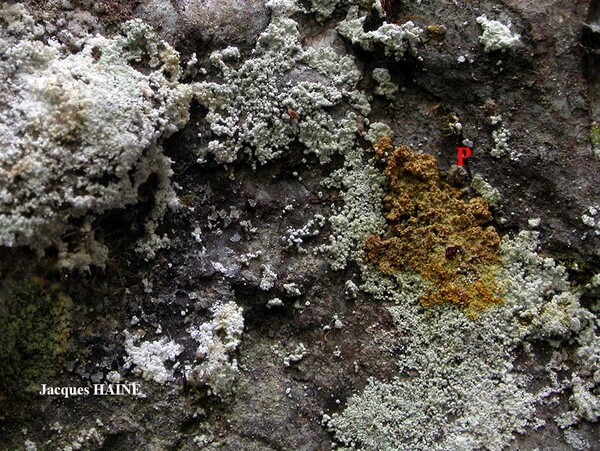
Jacques Haine - Source: http://www.lichensmaritimes.org/index.php?task=fiche&lichen=691&lang=en
France, Ardennes
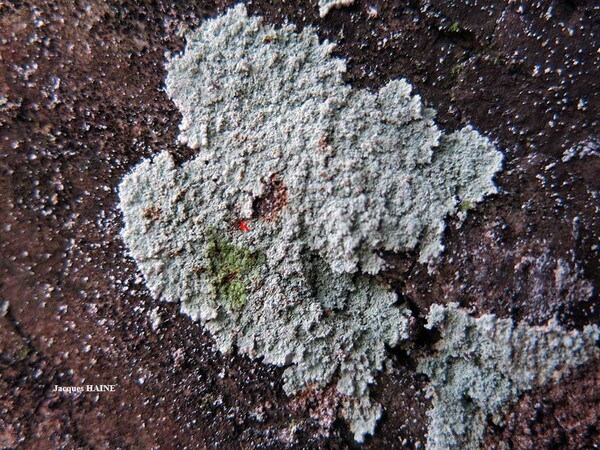
Jacques Haine - Source: http://www.lichensmaritimes.org/index.php?task=fiche&lichen=691&lang=en
France, Ardennes

Jacques Haine - Source: http://www.lichensmaritimes.org/index.php?task=fiche&lichen=691&lang=en
France, Ardennes

Bernard Bouffinier - Source: http://www.lichensmaritimes.org/index.php?task=fiche&lichen=691&lang=en
France, Crozon
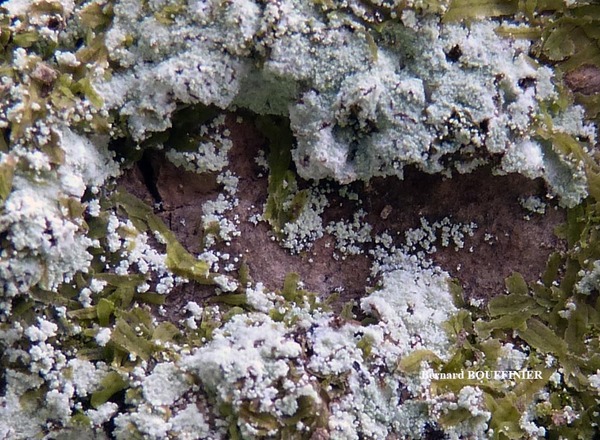
Bernard Bouffinier - Source: http://www.lichensmaritimes.org/index.php?task=fiche&lichen=691&lang=en
France, Crozon

Bernard Bouffinier - Source: http://www.lichensmaritimes.org/index.php?task=fiche&lichen=691&lang=en
France, Lanveoc
on schist
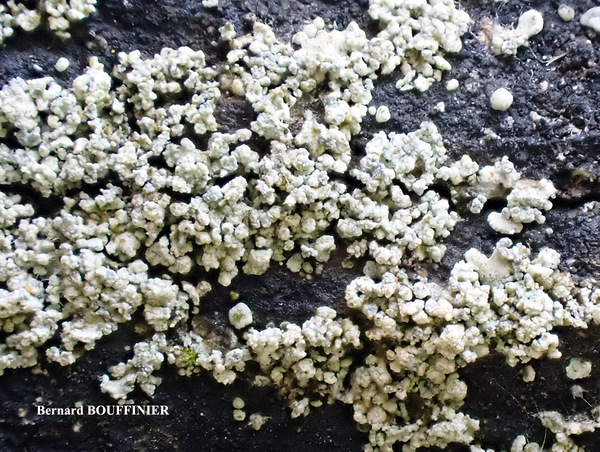
Bernard Bouffinier - Source: http://www.lichensmaritimes.org/index.php?task=fiche&lichen=691&lang=en
France, Lanveoc
on schist
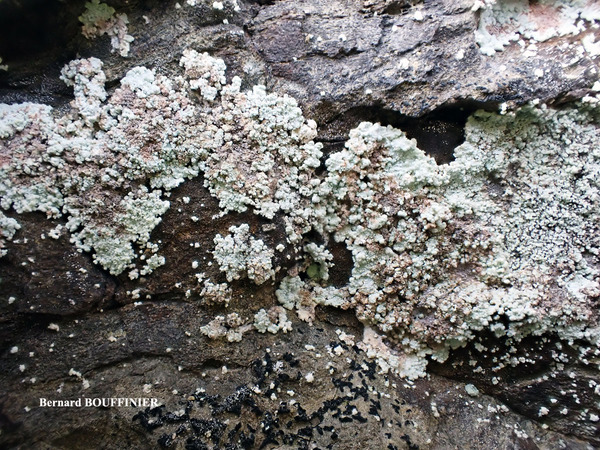
Bernard Bouffinier - Source: http://www.lichensmaritimes.org/index.php?task=fiche&lichen=691&lang=en
France, Lanveoc
on schist

Bernard Bouffinier - Source: http://www.lichensmaritimes.org/index.php?task=fiche&lichen=691&lang=en
France, Lanveoc
on schist
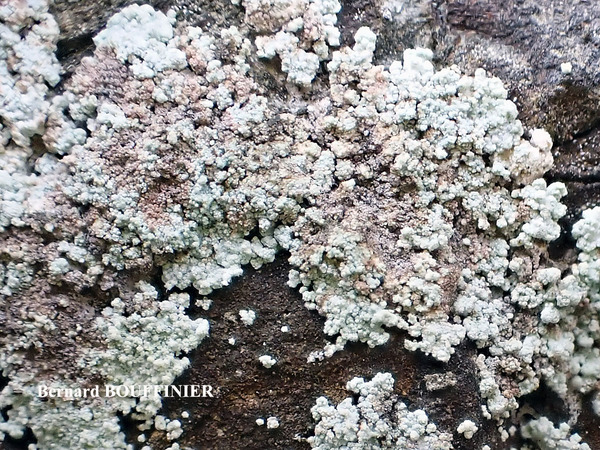
Bernard Bouffinier - Source: http://www.lichensmaritimes.org/index.php?task=fiche&lichen=691&lang=en
France, Lanveoc
on schist

Bernard Bouffinier - Source: http://www.lichensmaritimes.org/index.php?task=fiche&lichen=691&lang=en
France, Lanveoc
on schist
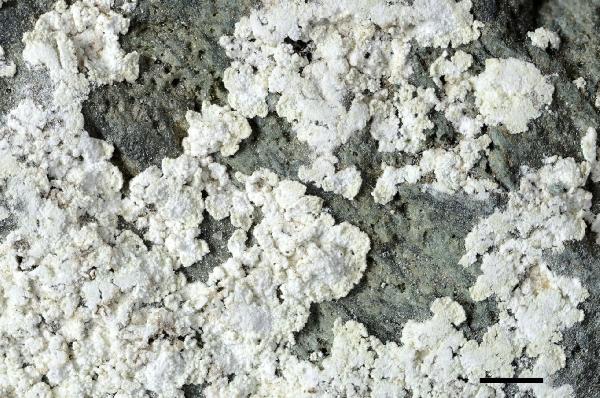
Source: Timdal, E. & Tønsberg, T. 2021. Lepraria lobificans (syn. L. santosii) and L. sylvicola new to northern Europe from Norway. Graphis Scripta 33 (3): 50–58. Oslo. ISSN 2002-4495. - CC BY-4.0
Lepraria lobificans, Norway (BG-L-98010). Scale bar = 2 mm. Photo E. Timdal.
Growth form: Leprose
Substrata: soil, terricolous mosses, and plant debris
Photobiont: green algae other than Trentepohlia
Reproductive strategy: mainly asexual, by soredia, or soredia-like structures (e.g. blastidia)
Commonnes-rarity: (info)
Alpine belt: absent
Subalpine belt: absent
Oromediterranean belt: absent
Montane belt: absent
Submediterranean belt: absent
Padanian area: absent
Humid submediterranean belt: rather rare
Humid mediterranean belt: rather rare
Dry mediterranean belt: rare

Predictive model
| Herbarium samples |

Jacques Haine - Source: http://www.lichensmaritimes.org/index.php?task=fiche&lichen=691&lang=en
France, Ardennes

Jacques Haine - Source: http://www.lichensmaritimes.org/index.php?task=fiche&lichen=691&lang=en
France, Ardennes

Jacques Haine - Source: http://www.lichensmaritimes.org/index.php?task=fiche&lichen=691&lang=en
France, Ardennes

Bernard Bouffinier - Source: http://www.lichensmaritimes.org/index.php?task=fiche&lichen=691&lang=en
France, Crozon

Bernard Bouffinier - Source: http://www.lichensmaritimes.org/index.php?task=fiche&lichen=691&lang=en
France, Crozon

Bernard Bouffinier - Source: http://www.lichensmaritimes.org/index.php?task=fiche&lichen=691&lang=en
France, Lanveoc
on schist

Bernard Bouffinier - Source: http://www.lichensmaritimes.org/index.php?task=fiche&lichen=691&lang=en
France, Lanveoc
on schist

Bernard Bouffinier - Source: http://www.lichensmaritimes.org/index.php?task=fiche&lichen=691&lang=en
France, Lanveoc
on schist

Bernard Bouffinier - Source: http://www.lichensmaritimes.org/index.php?task=fiche&lichen=691&lang=en
France, Lanveoc
on schist

Bernard Bouffinier - Source: http://www.lichensmaritimes.org/index.php?task=fiche&lichen=691&lang=en
France, Lanveoc
on schist

Bernard Bouffinier - Source: http://www.lichensmaritimes.org/index.php?task=fiche&lichen=691&lang=en
France, Lanveoc
on schist

 INDEX FUNGORUM
INDEX FUNGORUM
 GBIF
GBIF
 DOLICHENS
DOLICHENS


